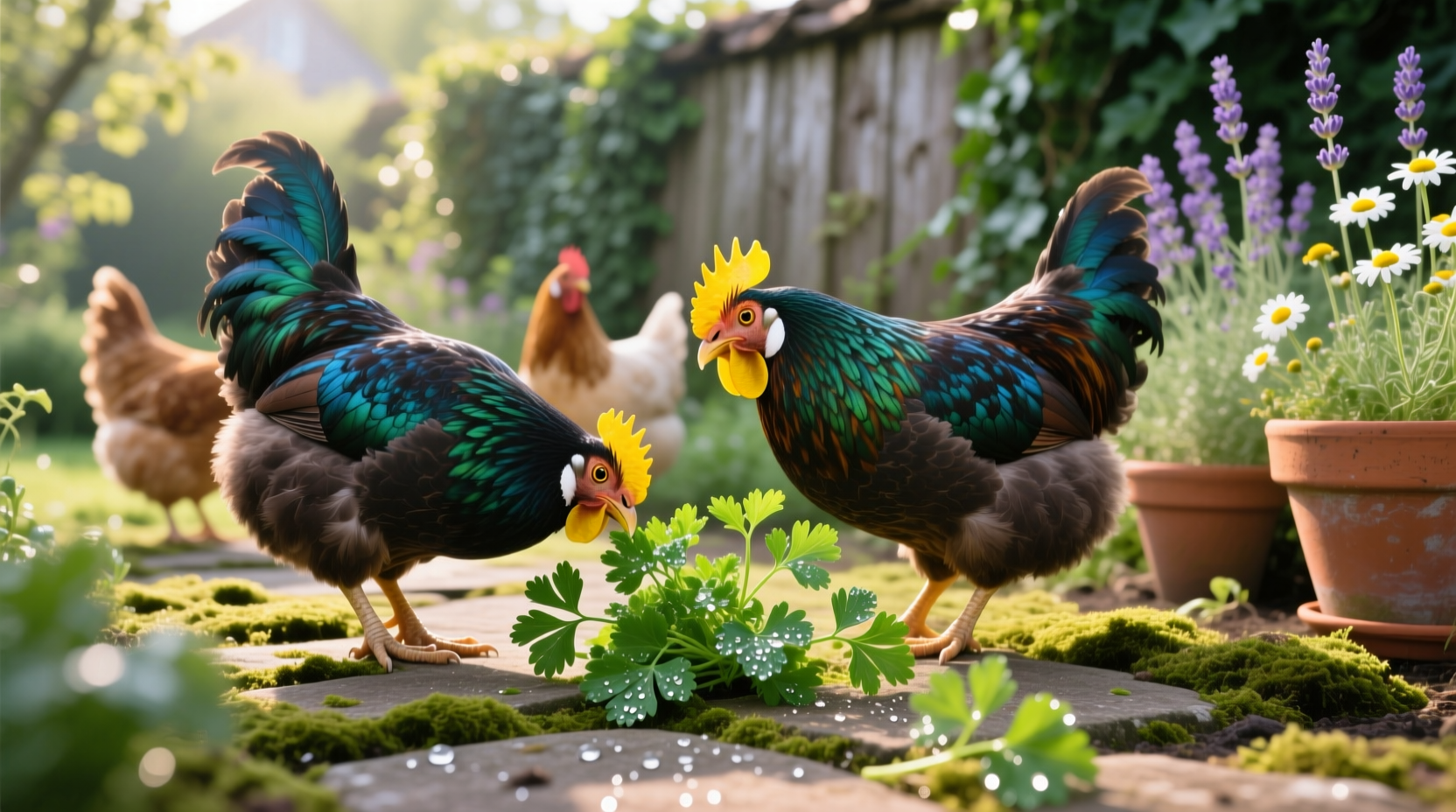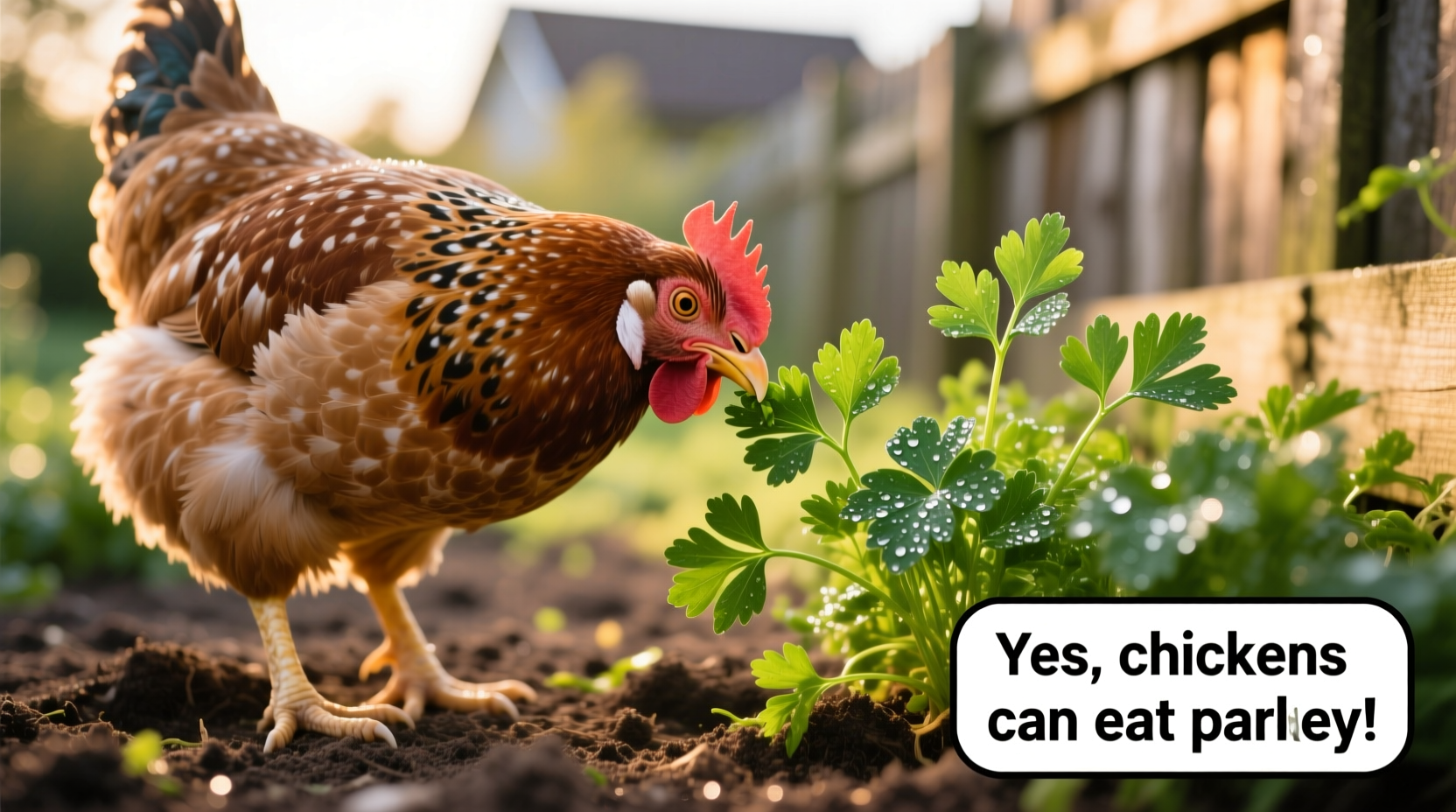Backyard chicken keepers often wonder which kitchen scraps and garden greens are safe for their flock. When it comes to parsley, the good news is this vibrant herb offers valuable nutrition without significant risks when fed properly. Understanding the right portions and preparation methods ensures your chickens reap the benefits while avoiding potential digestive issues.
Why Parsley Benefits Your Flock
Parsley isn't just a pretty garnish—it packs a nutritional punch that supports chicken health. This herb contains essential vitamins and minerals that complement your birds' regular feed. The vitamin A content promotes healthy vision and immune function, while vitamin C acts as an antioxidant. Calcium and iron support strong eggshells and healthy blood production.
| Nutrient | Amount per 100g | Benefit for Chickens |
|---|---|---|
| Vitamin A | 5054 IU | Supports vision and immune health |
| Vitamin C | 133 mg | Antioxidant and stress reduction |
| Calcium | 138 mg | Strong eggshell development |
| Iron | 6.2 mg | Blood health and oxygen transport |
According to research from Penn State Extension, leafy greens like parsley provide valuable supplemental nutrition when offered as part of a balanced diet. The study notes that chickens consuming varied diets with appropriate vegetable supplements showed improved feather condition and egg quality compared to those on feed-only diets.
Safe Serving Sizes for Your Chickens
While parsley offers benefits, proper portion control prevents potential issues. The Backyard Poultry Association recommends:
- Maximum 1-2 sprigs per chicken
- 2-3 times weekly as treats
- Treats should never exceed 10% of total diet
- Always provide fresh water alongside new foods
Monitor your flock for 24 hours after introducing parsley. Some chickens may experience mild digestive changes as they adjust to new foods. If you notice diarrhea or reduced appetite, discontinue feeding and reintroduce in smaller amounts after a week.
Preparing Parsley for Chicken Consumption
Proper preparation maximizes safety and nutritional value:
- Wash thoroughly - Remove dirt and potential pesticides
- Chop finely - Makes it easier for chickens to eat and digest
- Mix with regular feed - Helps prevent selective eating
- Avoid spoiled portions - Discard any wilted or moldy leaves
Both curly and flat-leaf parsley varieties are safe for chickens. Fresh parsley provides more nutrients than dried, but both can be offered in appropriate portions. Never feed parsley that has been cooked with oils, salt, or other seasonings.

When to Avoid Feeding Parsley
While generally safe, certain situations warrant caution:
- Young chicks under 8 weeks - Their digestive systems are still developing
- Chickens with kidney issues - Parsley contains oxalates that may exacerbate problems
- During molting - Focus on protein-rich foods instead
- When pesticide-treated - Never feed garden greens exposed to chemicals
The American Veterinary Medical Association notes that while parsley is generally safe, chickens with pre-existing health conditions may require dietary modifications under veterinary guidance.
Other Safe Herbs for Your Flock
Expand your chickens' diet with these additional safe options:
- Basil - Contains antioxidants and has mild anti-inflammatory properties
- Mint - Helps with digestion and may repel insects
- Oregano - Natural antimicrobial properties support gut health
- Cilantro - Rich in vitamins and minerals similar to parsley
Rotate different herbs to provide variety and prevent dietary boredom. Always introduce new foods gradually and monitor your flock's response.
Common Questions About Feeding Parsley to Chickens
Many chicken keepers have specific concerns about incorporating parsley into their flock's diet. Here are answers to frequently asked questions based on current poultry nutrition guidelines.











 浙公网安备
33010002000092号
浙公网安备
33010002000092号 浙B2-20120091-4
浙B2-20120091-4